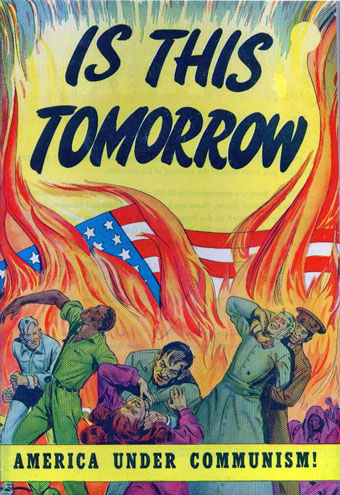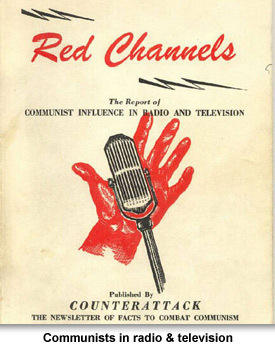
The Menzies government in the 1950s presented strategies that were a direct echo of the penetrating fear of communism in Australia. The Fear of Communisms Abrupt Impact on American Life in the 1950s To many the 1950s recall an idyllic era when everyone conformed and everyone lived simply and happily.

The fear of communism during the 1940s and 1950s Put yourself in the place of someone during the 1940s and 1950s who felt as if the fear of communism during the time had gone too far and was overblown.
Fear of communism in the 1950s. In the 1950s Americans were afraid of communism because of the widespread belief that communist ideology would infect the country and persuade citizens to turn against democracy and capitalism. The fear of communism breed the conformist 1950s which created suburbs consumerism organization men domesticated women car culture and explicit gender rules IJ 43-58. Communism engulfed everyone so much that people were afraid to be different.
The culture of the 1950s was not only seen in their everyday lives but shown through advertisements. In the 1950s women. In the 1950s Americans witnessed the creeping of communist ideologies into the far corners of the world.
Americans grew fearful that communism also was spreading undetected within the nations borders. This mindset of fear known as the Red Scare led to government actions that had a far-reaching and debilitating effect on the American public and included the persecution of thousands of suspected. First formed in 1938 the House Committee on Un-American Activities or HUAC was a special committee in the US House of Representatives tasked with investigating subversive individuals and organizations.
In the 1950s HUAC turned its attention to hunting reds a slang term for communists associated with the red flag of the Soviet Union. Anti-Communist hysteria in the 1950s The 1950s saw a wave of anti-Communist hysteria sweep across the United States. As was explored in the previous page this was a hysteria that was founded more in fearing the other than the objective circumstances of the moment.
Creating the other. The fear of communism in 1950s America. In 1950s America the country was undergoing drastic social and cultural change.
The return of American soldiers of WW2 meant population growth and suburban expansion in many of the major cities. The 1944 GI Bill gave returning servicemen the means to buy their dream house as well as funding for them to return to college that would guarantee better. The fear of communism breed the conformist 1950s which created suburbs consumerism organization men domesticated women car culture and explicit gender rules IJ 43-58.
Communism engulfed everyone so much that people were afraid to be different. The culture of the 1950s was not only seen in their everyday lives but shown through advertisements. In the 1950s women were working and being.
The Fear of Communisms Abrupt Impact on American Life in the 1950s To many the 1950s recall an idyllic era when everyone conformed and everyone lived simply and happily. Beneath this conformity people were stirring and new ideas were simmering. Some would not explode until the 1960s stated Rick Musser Musser The 1950s.
Film had a sudden impact on people in the United. Following World War II there was an increased fear of Communism in Australia. The Menzies government in the 1950s presented strategies that were a direct echo of the penetrating fear of communism in Australia.
These policies were recognized during the Cold War period at a time when the fear of communism was the most extreme. This in conjunction with the many other security threats. Communist fears were high during the 1950s.
The Menzies government in the 1950s introduced policies that were a direct reflection of the intense fear of communism in Australia. These policies were established during the Cold War period at a time when the fear of communism was the greatest. The fear in Australia was also demonstrated by the Petrov Affair.
Furthermore communist fears in Australia. An informal relationship that some people believe exists between the military and the defense industry to promote greater military spending and influence government policy. How did the fear of communism shape life in the United States in the 1950s.
By having Americans face a new world order that has precipitated global terrorism and uncertainty. Mark each statement if it describes how the nation reacted to the fear of communism in the 1950s. Anticommunist laws were passed.
New laws made it illegal to criticize the government. New immigration laws allowed entry to Soviet citizens. Some government workers were forced to.
The fear of communism during the 1940s and 1950s Put yourself in the place of someone during the 1940s and 1950s who felt as if the fear of communism during the time had gone too far and was overblown. We confidently assure you high-quality work. We engage a number of strategies in order to guarantee top-level assignments.
In 1929 anarcho-communism was achieved in Korea by the Korean Anarchist Federation in Manchuria KAFM and the Korean Anarcho-Communist Federation KACF with help from anarchist general and independence activist Kim Chwa-chin lasting until 1931 when Imperial Japan assassinated Kim and invaded from the south while the Chinese Nationalists invaded from the north resulting in the creation.